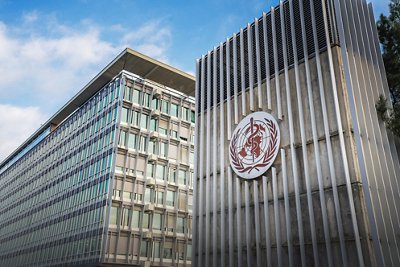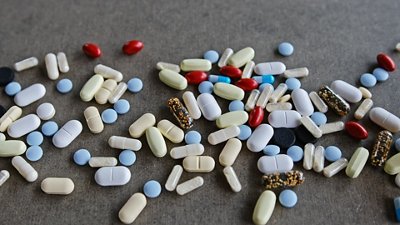How Pharmacists Can Contribute to Antimicrobial Stewardship?
By the bioMérieux Editors | Reading time: 2 min
PUBLICATION DATE: APRIL 10, 2024
We asked Dr. Catherine Duggan, CEO of the International Pharmaceutical Federation, about what clinical pharmacists can do in their roles to contribute to and promote antimicrobial stewardship.

Dr. Catherine Duggan, CEO of the International Pharmaceutical Federation
In what innovative ways can practitioners in the pharmaceutical sciences preserve existing and future antibiotics?
Pharmacy stands as a true science-based profession, distinguished by its commitment to delivering evidence-based practice. Their role extends beyond dispensing medications; they are instrumental in promoting health, ensuring the prudent use of antibiotics, educating patients on proper medication adherence, and collaborating with healthcare teams to optimize treatment outcomes.
However, successful stewardship programs in community and hospital settings imply collaboration between the health care professionals including physicians, pharmacists, nurses, microbiologists, etc. The, “Doctors-Pharmacists Quality Circles for Prescribing” programme can be a good example for such collaboration in Switzerland. Under this programme, pharmacists and medical doctors review scientific, clinical, therapeutic, and economic data on a regular basis to ensure optimal care for individuals. They compare these with their current prescribing patterns and discuss any deviation from evidence-based practice. Another programme is the Swedish SWEDRES programme, which aims to present data relating to both humans and animals on the sales of antibiotics and on antibiotic resistance in a joint report. Such models have demonstrated the impact in terms of rational prescribing of antibiotics and illustrate the powerful synergy of inter-professional activities.
Pharmacists in the antimicrobial stewardship team make day-to-day stewardship interventions to preserve antibiotics, as the development of a new antibiotics remains a challenge. Fostering a culture of continuous learning and awareness regarding responsible antibiotic use remains crucial. Pharmaceutical companies, here, have a role to play, such as supporting frontline pharmacists with information about the latest advancements in antimicrobial therapies. In addition, pharmaceutical companies can make a substantial impact by providing grants to support antimicrobial stewardship pharmacist interventions, research, and application of rapid diagnostic testing to improve patient outcomes.
What role will diagnostics and information technology play in ensuring appropriate utilization of antimicrobials and mitigating the spread of resistance? What strategies are warranted to guarantee access for pharmacists, scientists and educators across various communities and industries?
The first step is making the diagnosis. Diagnostics have great potential to help practitioners with precise diagnosis and then appropriate treatment, while keeping the concept of prudent use of antibiotics. However, the results must be interpreted wisely. For example in the case of urinary tract infections (UTIs), colonization of bacteria in the urinary tract may not necessary need antibiotic treatment. Rapid diagnostic tests are critical, but without antimicrobial stewardship programmes, they may have little or no impact on patient care. FIP advocates for the use of rapid diagnostic tests and for the AMS strategies. Documenting their impact on time to effective antimicrobial therapy would help informing and strengthening the advocacy.
Moreover, use of information technology (IT) can help detecting early adverse events, early signs of infections, improve monitoring the surveillance and reporting for pharmacovigilance. IT systems are instrumental in establishing robust antibiotic surveillance mechanisms and enhancing pharmacovigilance efforts to monitor the use of antimicrobial agents. Using healthcare databases and analysing vast amounts of patient data, electronic health records, and prescription patterns can help identify unusual trends or patterns indicative of early adverse events related to antimicrobial use. With real-time monitoring of patient responses to antibiotics, healthcare professionals can detect any unexpected reactions or complications promptly. Early detection of resistance patterns allows for proactive measures, such as adjusting prescribing practices or implementing targeted interventions to curb the spread of resistance.
Electronic reporting systems streamline the communication between healthcare professionals and regulatory bodies, ensuring a rapid response to potential safety concerns. In addition, FIP advocates for pharmacists to have access to patient (electronic) health records to facilitate more informed decision-making and improved adherence.
Information technology can also help with behavioural change. For example, there are mobile health applications being piloted in selected hospitals in Africa that help practitioners with antibiotic stewardship. Pharmacists have to continue to collaborate with scientists and educators across various communities to further ensure appropriate utilisation and development of antimicrobials and mitigate the spread of resistance, and technologies can be of a great help in the future.
What interprofessional and organizational barriers do you envision will arise with the expansion of pharmacists’ scopes of practice as it relates to AMR?
Barriers of course exist in expansion of pharmacists’ scopes of practice. However, FIP is actively working on removing them. We have seen great progress in vaccination administration for pharmacists, which directly contributes to infection prevention and control, thus helping minimizing AMR. What we have seen is that despite a consolidated global trend towards pharmacists having the authority to vaccinate, several barriers remain a challenge around the world, including regulatory obstacles, opposition by other health professions, and a lack of appropriate incentives and remuneration for a public health service that generates savings for patients and health systems.
In the global health arena, FIP keeps advocating that many more lives can be saved through increased coverage and access to vaccines, which can only be improved if a life-course approach is promoted through strong efforts from all immunization stakeholders. FIP supports its members and urges the policy makers to promote and expand pharmacists’ roles in immunization. Advocacy, as well as patient-centred communication on interprofessional and organizational level is very important in reducing barriers to expansion of pharmacists scopes of practice as it relates to AMR. FIP has a unique platform because we are a pharmacy organization. We have the ability to work with physicians and other colleagues to assure them we can help overcome AMR together.
Opinions expressed in this article are not necessarily those of bioMérieux
YOU MAY BE INTERESTED IN THESE ARTICLES
SHARE THIS ARTICLE:
- AMR AMS


%20copie?qlt=85&ts=1712666912213&dpr=off)